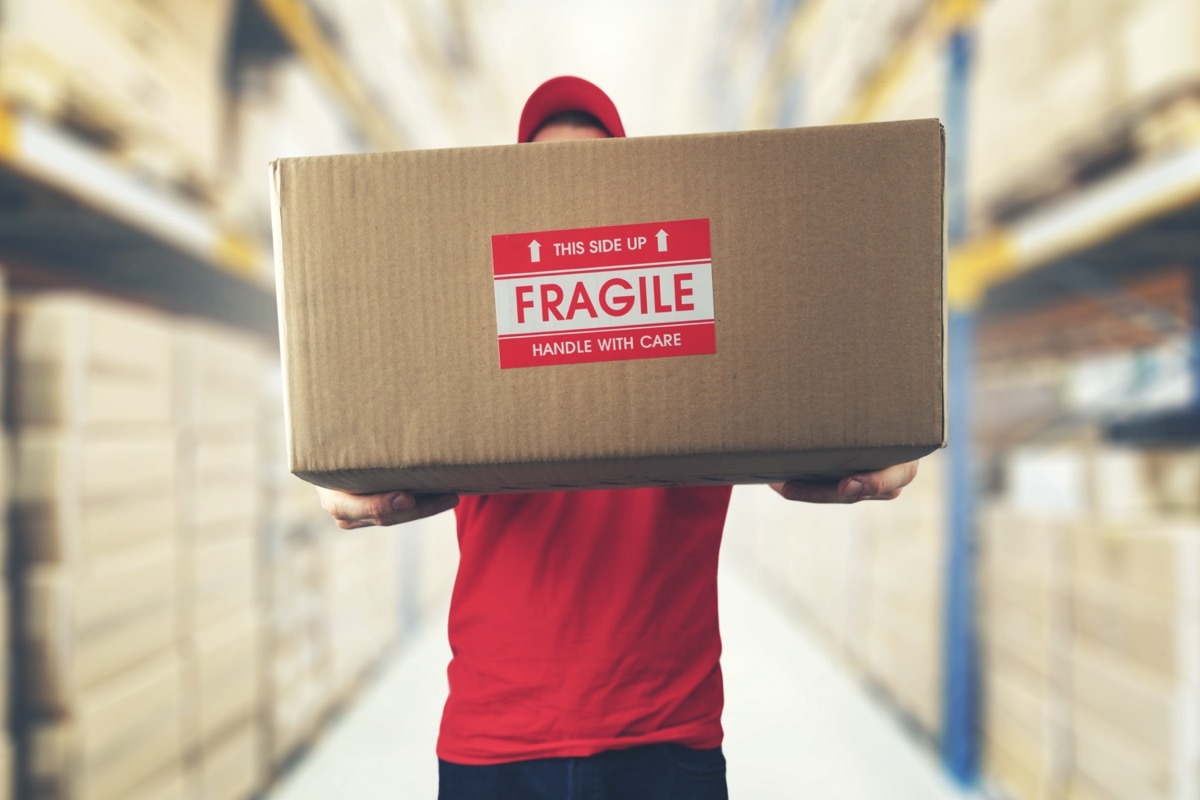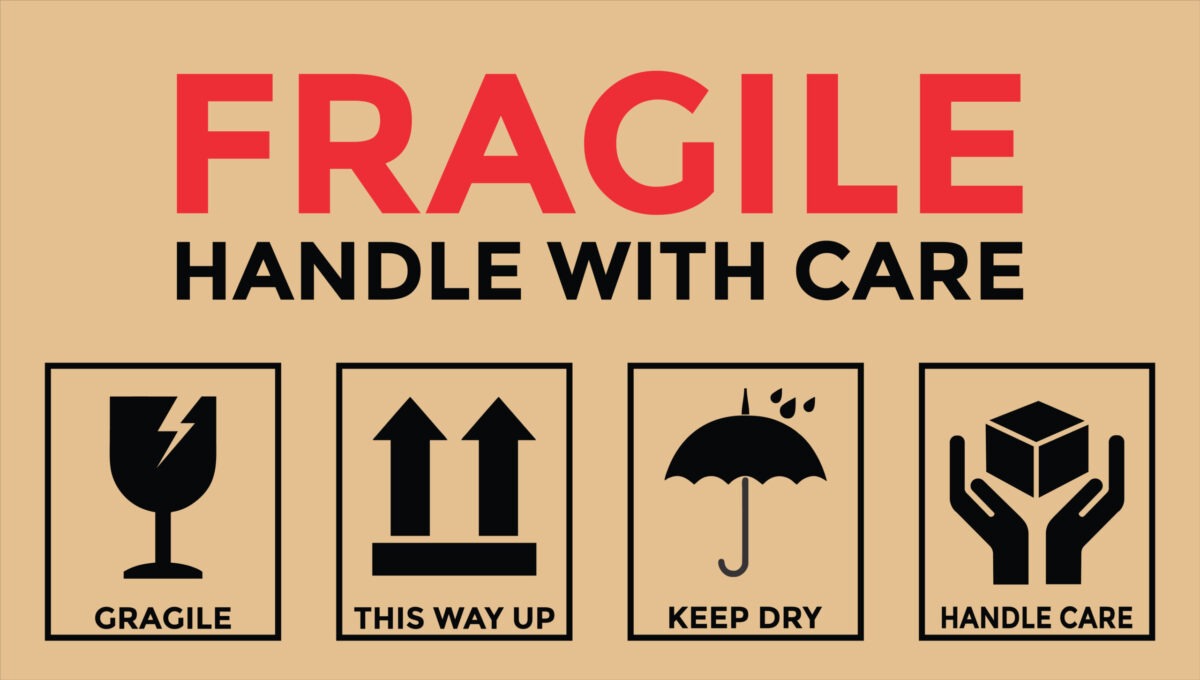When it comes to shipping parcels, ensuring they arrive safely and promptly at their destination is paramount. One of the most crucial aspects of this process is the proper application of labels. Labels provide essential information to couriers and handlers, guiding them on how to handle the package, where it’s going, and how to treat it. In this blog, we’ll explore the best practices for putting labels on your parcel, ensuring your items are shipped smoothly and efficiently.
Understanding the Importance of Proper Labelling
Proper labelling is not just about sticking a label on a box. It’s about ensuring that the information on the label is clear, legible, and placed in a position where it can be easily seen and scanned. Incorrectly placed labels can lead to delays, misdeliveries, or even damage to your items. Labels should be applied in a way that ensures they remain intact throughout the shipping process, even in harsh conditions.
Choosing the Right Label for Your Parcel
Before you start labelling your parcel, it’s important to choose the right type of label. There are various labels available for different purposes, such as shipping labels, “This Way Up” labels, “Handle With Care” labels, and more. Each type of label serves a specific function and helps ensure your parcel is handled correctly. For instance, if you are shipping fragile items, a “Handle With Care” label is essential to alert handlers to take extra precautions. Shipping labels are the most common type of label used. They typically contain the recipient’s address, the sender’s address, and a barcode that can be scanned for tracking purposes. It’s crucial to ensure that this label is accurate and complete to avoid any issues during transit.
Preparing Your Parcel for Labelling
Before applying any labels, make sure your parcel is properly packaged. Use sturdy boxes or envelopes that are appropriate for the contents. If you’re shipping fragile items, ensure they are well-protected with bubble wrap, packing peanuts, or other cushioning materials. The packaging should be secure enough to prevent the contents from shifting or breaking during transit. Once your parcel is securely packed, clean the surface where you intend to place the label. Dust, dirt, or moisture can prevent the label from sticking properly, so it’s important to have a clean, dry surface. If the box has any old labels or barcodes, remove them to avoid confusion during the shipping process.
Applying the Shipping Label
When applying the shipping label, placement is key. The label should be placed on the largest, most visible surface of the parcel. This ensures that it can be easily seen and scanned by couriers. Avoid placing the label over seams or edges, as this can cause it to peel off or become damaged. Start by peeling the backing off the label and carefully placing it on the parcel. Smooth it out to remove any bubbles or wrinkles, ensuring it adheres fully to the surface. It’s important that the label lies flat and is not creased or folded, as this can affect the readability of the barcode and address. In addition to the shipping label, you may need to apply other labels depending on the nature of your parcel. For example, if your package contains fragile items, place a “Fragile” or “Handle With Care” label on multiple sides of the box. This ensures that handlers are aware of the need for careful handling from every angle.
Using Clear Packaging Tape for Added Security
To further secure your labels, consider using clear packaging tape. This is especially important if your parcel will be exposed to moisture or rough handling. Place a piece of clear tape over the label, making sure it is fully covered. This not only protects the label from damage but also ensures it stays in place throughout the shipping process. However, be cautious not to cover the barcode with tape that might cause glare or make it difficult for scanners to read. If possible, use a matte finish tape to avoid this issue. The goal is to protect the label without compromising its readability.
Labelling Oddly Shaped Parcels
Not all parcels come in neat, rectangular boxes. Sometimes, you may need to ship items in irregularly shaped packages, such as tubes or envelopes. In these cases, labelling can be a bit more challenging. The key is to find the flattest, most visible surface on the parcel and place the label there. For cylindrical items like tubes, place the label lengthwise along the side of the tube. This ensures it can be read easily from any angle. For flat items like envelopes, place the label in the centre, avoiding the edges where it might peel off.
International Shipping Considerations
If you’re shipping parcels internationally, there are additional considerations to keep in mind. International shipping labels often require more information, such as customs declarations and country-specific details. Make sure you fill out all required fields accurately to avoid delays at customs. In addition to the standard shipping label, you may need to include additional documentation, such as commercial invoices or packing lists. These documents should be placed in a clear plastic sleeve and attached to the outside of the parcel. Ensure they are easily accessible for customs officers. It’s also important to be aware of any specific labelling requirements for the destination country. Some countries have regulations regarding the size, placement, and content of shipping labels. Check the guidelines provided by your shipping carrier to ensure compliance with international shipping standards.
Tips for Ensuring Labels Stay Intact
Shipping can be a rough process, with parcels being handled multiple times and exposed to various conditions. To ensure your labels stay intact and readable, follow these tips:
Use high-quality labels and adhesives designed for shipping. Cheap labels may peel off or become damaged during transit.
Avoid placing labels over seams or edges where they can be easily torn.
Apply clear packaging tape over the labels to protect them from moisture and abrasion.
Ensure the surface of the parcel is clean and dry before applying the labels.
Double-check the placement of the labels to ensure they are visible and not covered by other packaging materials.
Handling Special Requirements for Sensitive Items
Certain items require special handling and labelling to ensure their safe delivery. For example, if you are shipping perishable goods, you may need to use labels indicating the need for refrigeration. Similarly, hazardous materials require specific labels to inform handlers of the potential risks. When shipping sensitive items, it’s crucial to follow all relevant regulations and guidelines. This includes using the appropriate labels and packaging materials. For instance, hazardous materials may require specific types of containers and cushioning to prevent leaks or spills. Always check with your shipping carrier for any special requirements related to your items. They can provide guidance on the necessary labels and packaging to ensure compliance with safety regulations.
Dealing with Returns and Reusable Packaging
In some cases, you may need to send parcels that include return labels or reusable packaging. This is common in e-commerce, where customers may need to return items. To facilitate this process, include a return label inside the package, along with clear instructions on how to use it. Reusable packaging should be durable and easy to reseal. Ensure the return label is clearly marked and placed in a visible location. Providing a prepaid return label can also make the process easier for your customers, improving their overall experience.
Environmental Considerations in Labelling
As awareness of environmental issues grows, many businesses are looking for ways to reduce their ecological footprint. This extends to labelling and packaging practices. Consider using eco-friendly labels and adhesives that are biodegradable or made from recycled materials. Additionally, look for packaging materials that are recyclable or compostable. Reducing the use of plastics and opting for sustainable alternatives can help minimise the environmental impact of your shipping practices. Many consumers appreciate companies that take steps to be environmentally responsible, which can enhance your brand’s reputation.
Technology and Innovative Solutions for Labelling
Advancements in technology have led to innovative solutions for labelling parcels. For example, some companies use smart labels with RFID (Radio Frequency Identification) technology. These labels can be scanned without direct line-of-sight, making the handling process more efficient. Another innovation is the use of QR codes on shipping labels. These codes can store a large amount of information and can be scanned easily with a smartphone. This allows for quick access to tracking information and other details about the parcel. Exploring these technological solutions can streamline your shipping process and provide additional benefits, such as improved tracking and enhanced security. However, it’s important to ensure that any new technology you adopt is compatible with your shipping carrier’s systems.
The Role of Carriers in Labelling
Shipping carriers play a crucial role in the labelling process. Each carrier has its own specific requirements for label size, placement, and content. It’s important to familiarise yourself with these requirements to ensure compliance and avoid any issues during shipping. Most carriers provide guidelines and templates for their shipping labels. These templates include all the necessary fields and barcodes required for tracking and delivery. Using these templates can help streamline the labelling process and ensure accuracy. Additionally, many carriers offer online tools and software that can generate shipping labels automatically. These tools can save time and reduce the risk of errors by populating the labels with the correct information.
Ensuring Compliance with Shipping Regulations
Shipping regulations can vary depending on the type of items being shipped and the destination. It’s essential to ensure your labels comply with all relevant regulations to avoid delays, fines, or other issues. For example, shipping hazardous materials requires compliance with strict regulations regarding labelling, packaging, and documentation. Failure to adhere to these regulations can result in serious consequences, including fines and legal liability. Similarly, international shipments must comply with customs regulations, which often include specific labelling requirements. Ensure all necessary information is included on the labels and that any additional documentation is attached to the parcel.
The Future of Labelling and Shipping
The world of shipping and labelling is constantly evolving, with new technologies and innovations emerging regularly. The future of labelling is likely to include even more advanced solutions, such as fully digital labels and integrated tracking systems. Digital labels can display real-time information and updates, providing greater visibility and control over the shipping process. Integrated tracking systems can enhance the efficiency of logistics operations, reducing the risk of lost or delayed parcels. As these technologies become more widely adopted, businesses will need to stay informed and adapt to remain competitive. Embracing these advancements can lead to improved efficiency, better customer service, and greater overall success in shipping operations.
Properly labelling your parcel is a critical step in ensuring it reaches its destination safely and on time. By understanding the importance of correct labelling, choosing the right labels, and following best practices for application, you can enhance the efficiency and reliability of your shipping process. Whether you’re shipping domestically or internationally, taking the time to label your parcels correctly can make a significant difference in the success of your shipments. At Price Stickers, we’re here to support you with high-quality labels and expert advice, ensuring your parcels are always in good hands. Get in touch to find out more.



